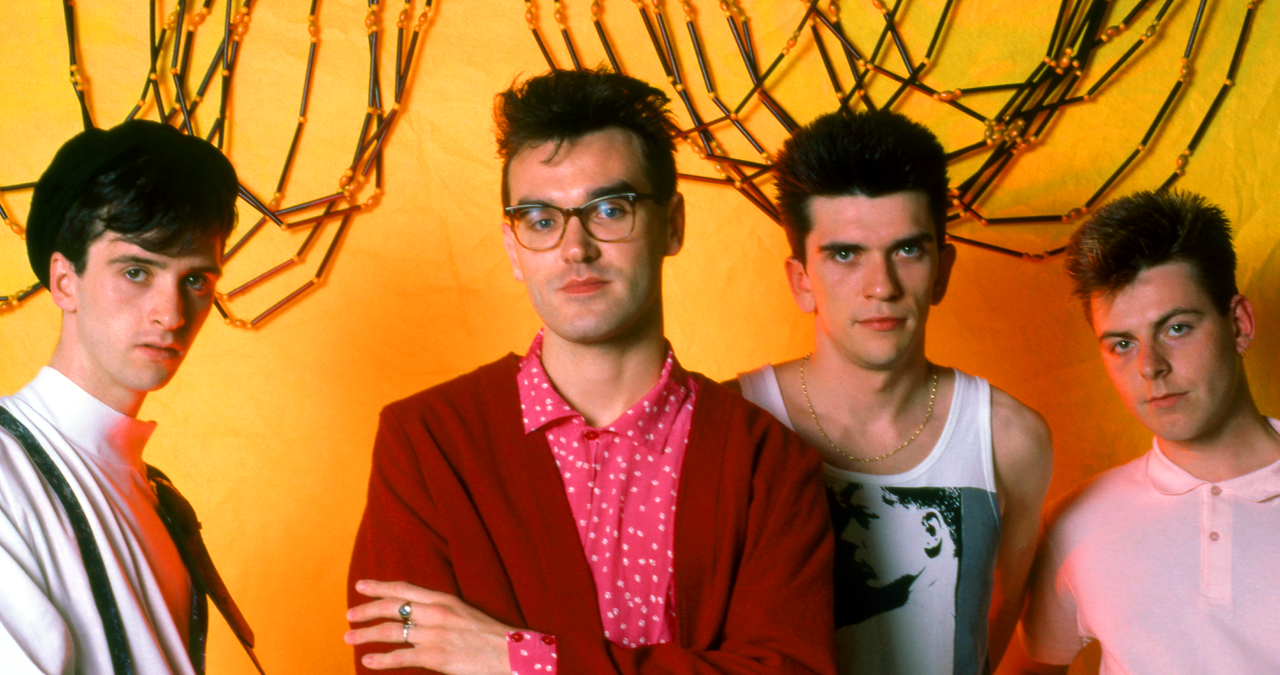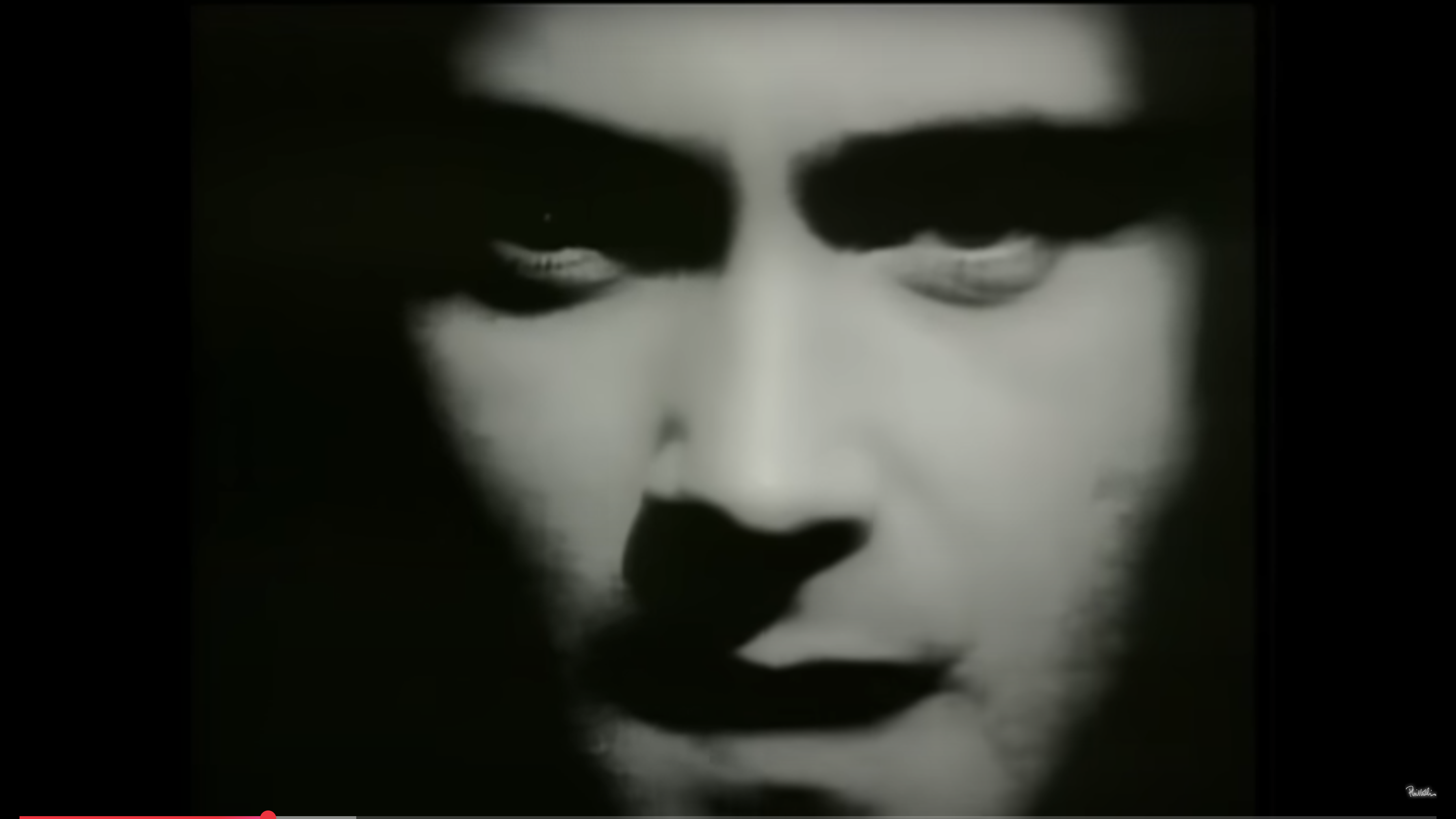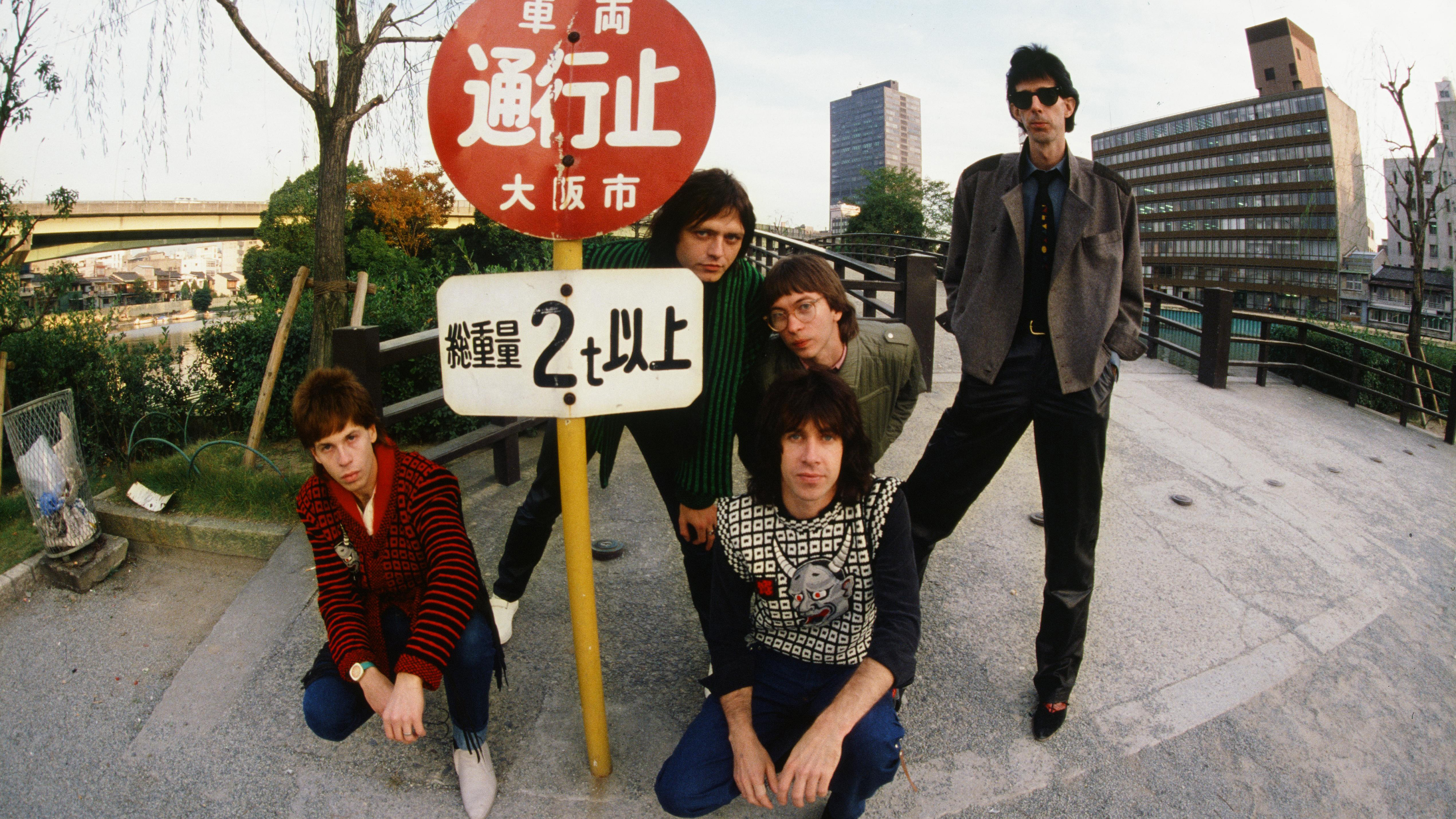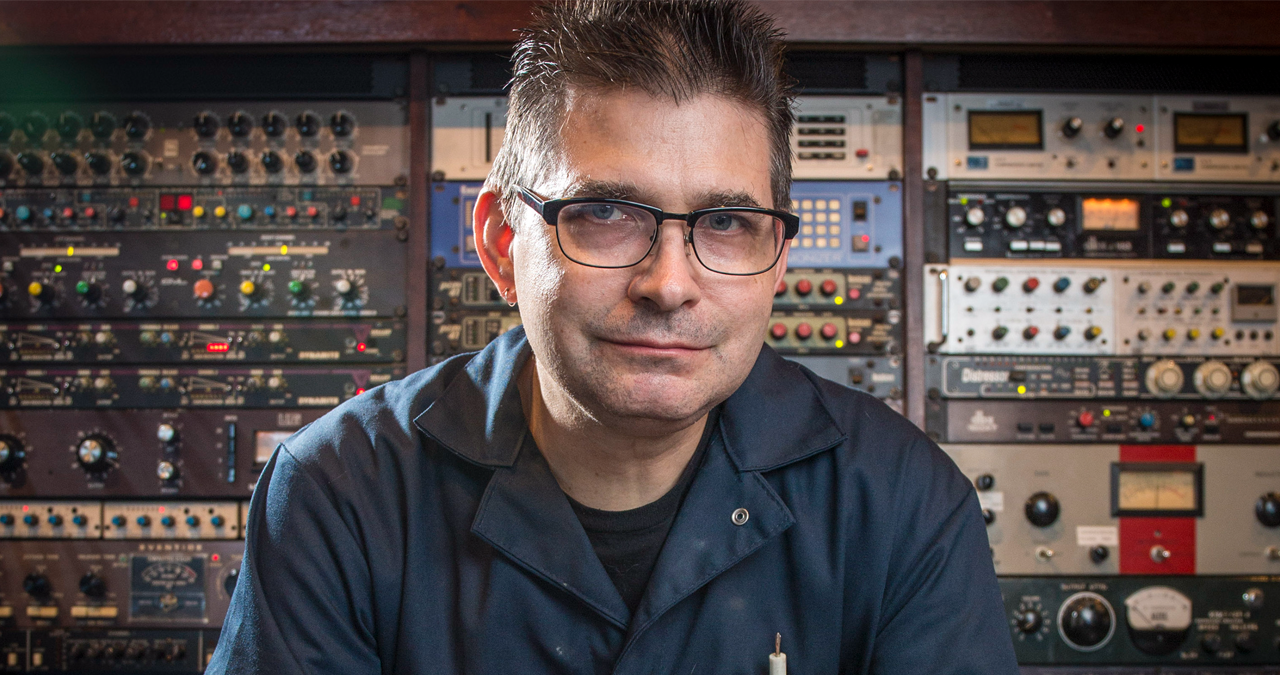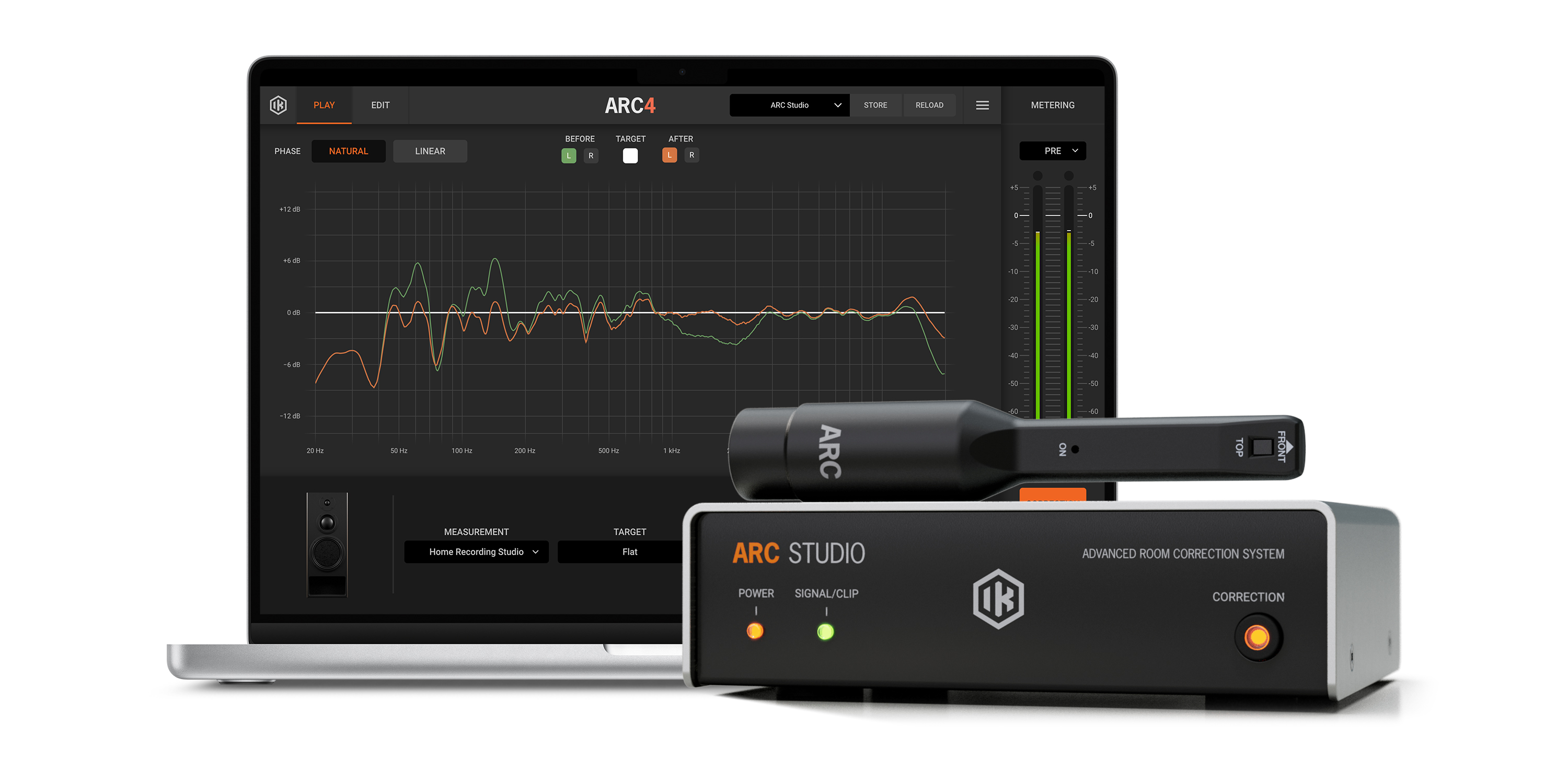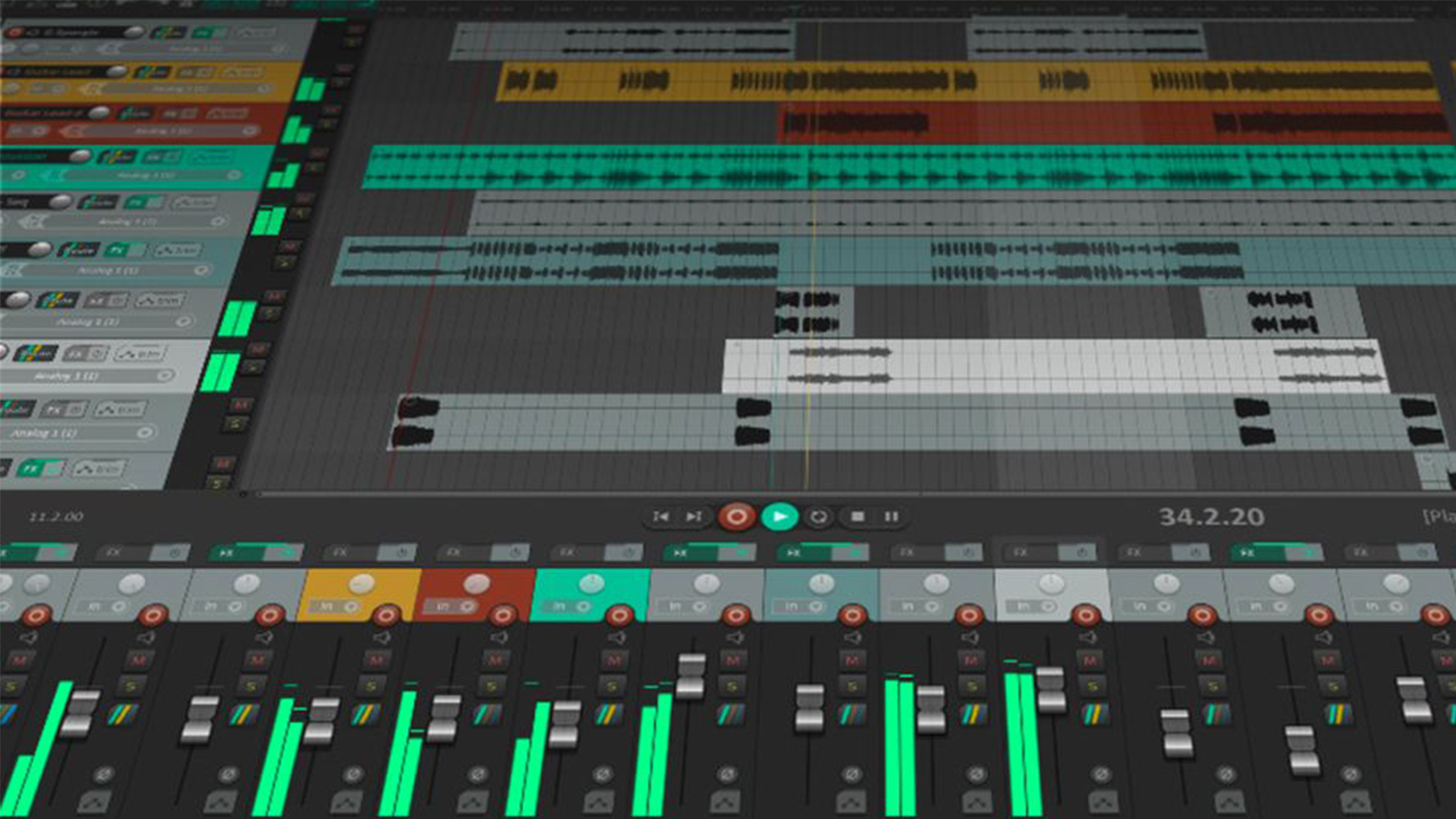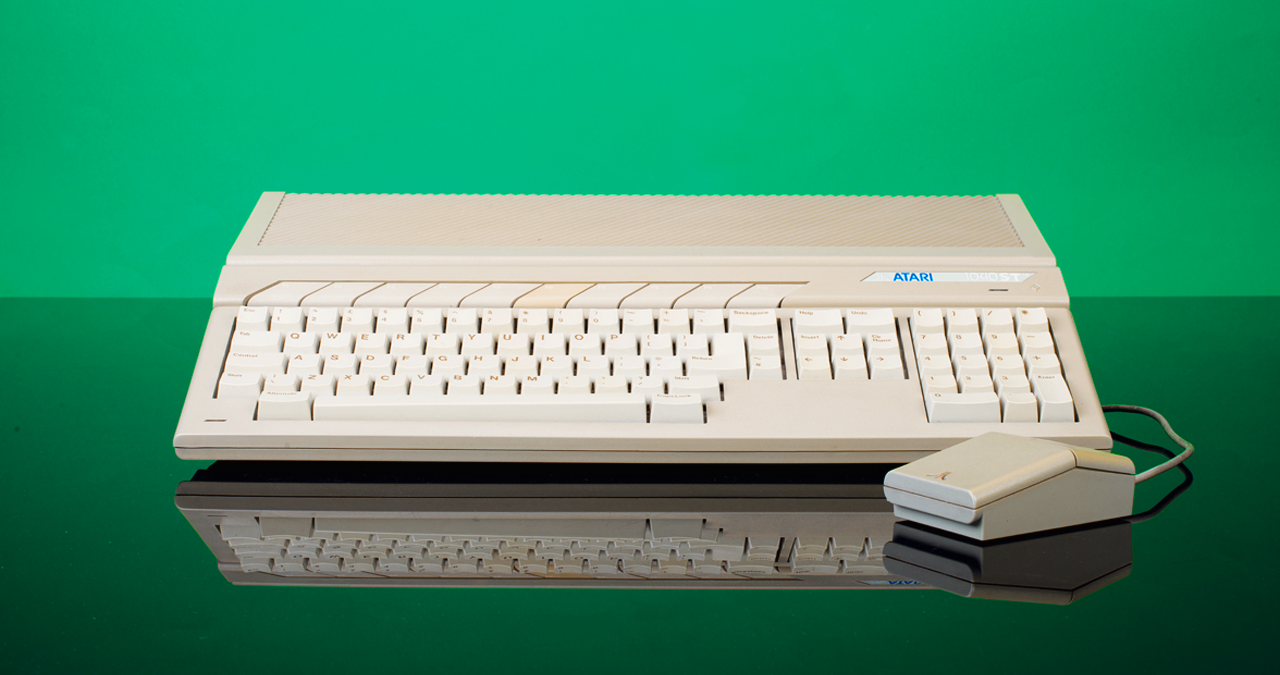"I can clearly see how quickly things can come together when you have the right tools at your disposal": I tried both face-to-face lessons and Pianote to learn the piano in 8 weeks - here's how I got on
Will combining online learning with face-to-face lessons be just what I need to become the piano player I've always wanted to be? Let's find out
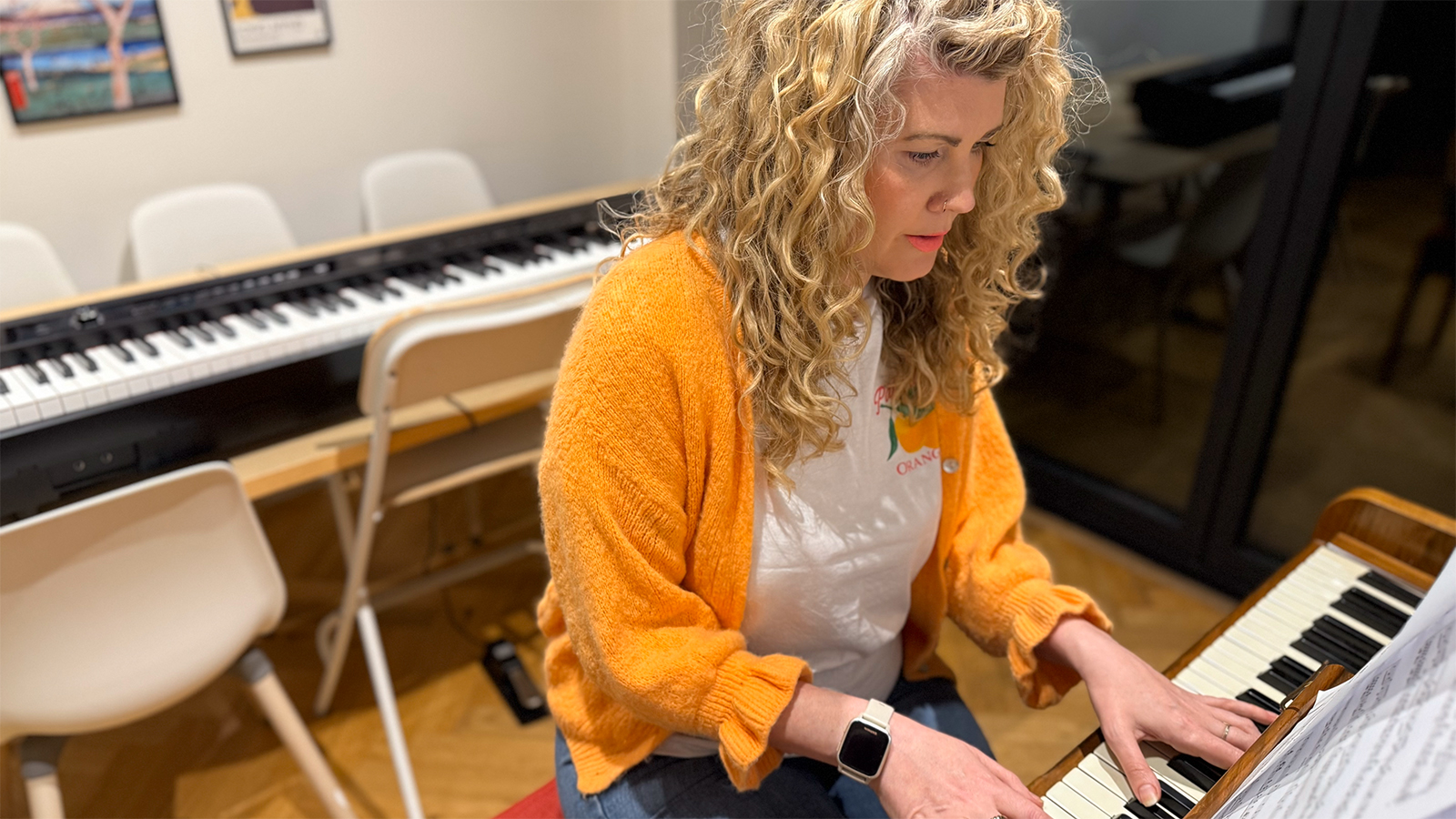
There's never been a more exciting time to dive into learning an instrument. With a plethora of options available, from traditional in-person lessons to innovative app and online piano lesson platforms, there's truly something for everyone, no matter your skill level or learning style. Using these different tools together, in conjunction with one another, should make for a fairly comprehensive learning journey, right?
Price: $40 per month, $240 per year,
Free trial: 30 days exclusive to MusicRadar readers
System requirements: PC, Mac, iOS, Android
Skill levels: 10
Song Library: Over 1,000 songs
Sign up: Pianote
Read our full Pianote review
In this article, we're putting that theory to the test. We’ve enlisted a relative piano novice who will embark on a thrilling eight-week journey that includes both one-on-one in-person lessons and the highly-rated piano tutorial app, Pianote.
Throughout this adventure, we’ll keep a close eye on how our learner navigates these different approaches. Will one method outshine the other? Will they naturally lean towards one style over the other? Let's find out.
Introducing Tess
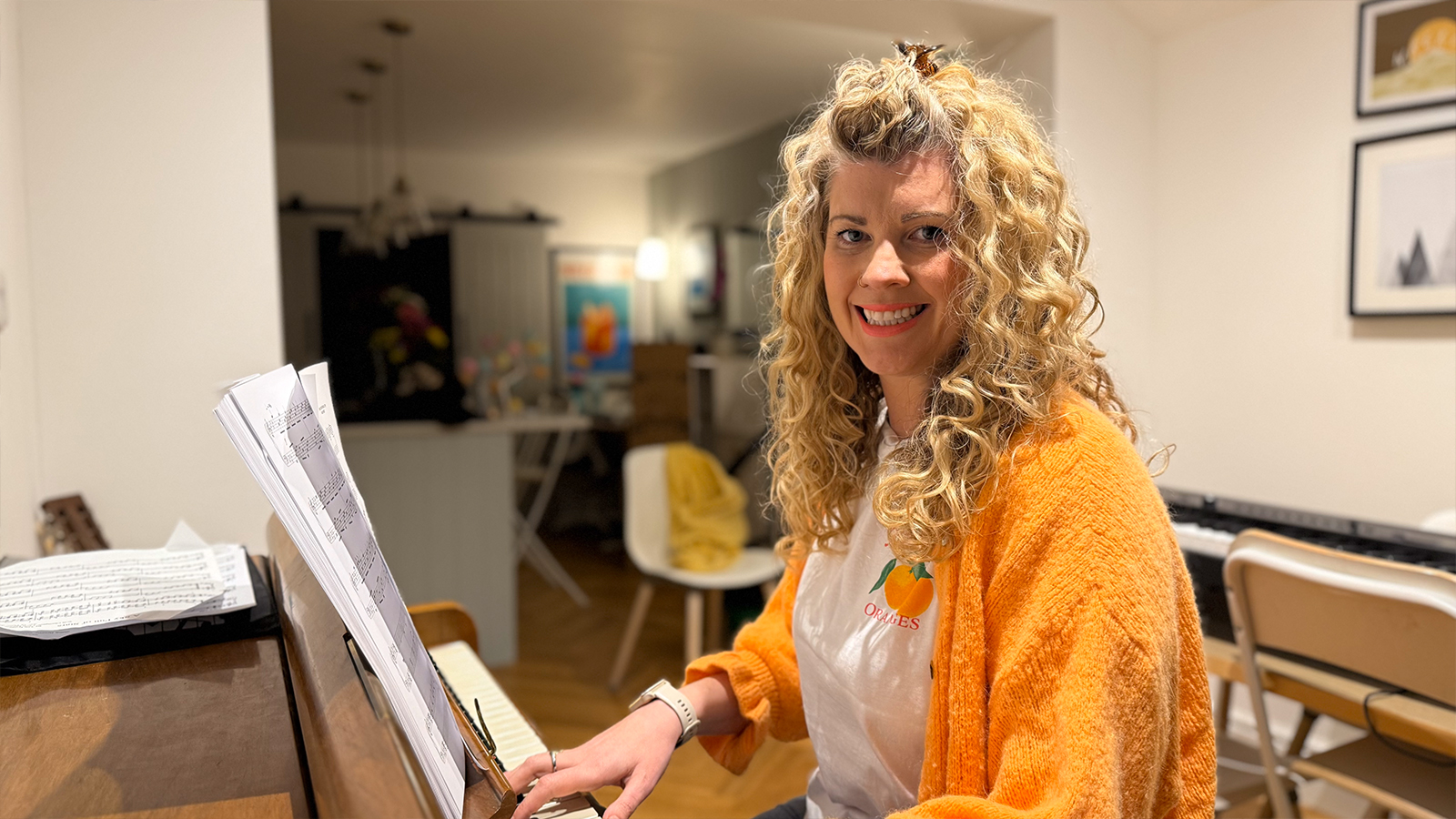
Hi, I'm Tess, and I'll be the one taking on this piano learning challenge. As the partner of one of MusicRadar’s gear reviewers, I’m accustomed to a steady stream of boxes arriving and departing from our hallway - microphones, guitars, amps, pedals; you name it. For years, I’ve navigated my way over piles of ‘toys’ just to get out the front door. However, when a large box arrived addressed to me, it was quite exciting. It turned out that my partner Chris had arranged with the team at MusicRadar for an article exploring how feasible it is to go from piano novice to confident player in just eight weeks. To assist with this, we had taken delivery of an 88-key digital piano on loan for me to learn. No pressure!
I should clarify that I’m neither a) disinterested in music nor b) a complete novice. My partner, dad, brother, son, and stepson are all musical, and I played a little piano as a teenager. However, for various reasons, life got in the way, and my budding piano career fizzled out. Like anything worth pursuing, it requires consistent practice to reach any level of proficiency. Contrary to the saying, learning an instrument is not like riding a bike. It requires practice, building synapses and muscle memory; taking extended breaks tends to set you back- if not to the beginning, certainly to a point where you need to relearn the fundamentals.
I’ve always wanted to start playing again, but life milestones and responsibilities often took precedence over what I considered “fun.” Additionally, the fear of having to start from scratch, which would demand time and test my ability to stick with something, held me back. However, it dawned on me that intentionally carving out time in my life for something I wanted to do was important. So, when Chris arranged a series of piano lessons as a gift and set up this feature with MusicRadar, I took it as a sign that I could - and should - commit to this.
The set up
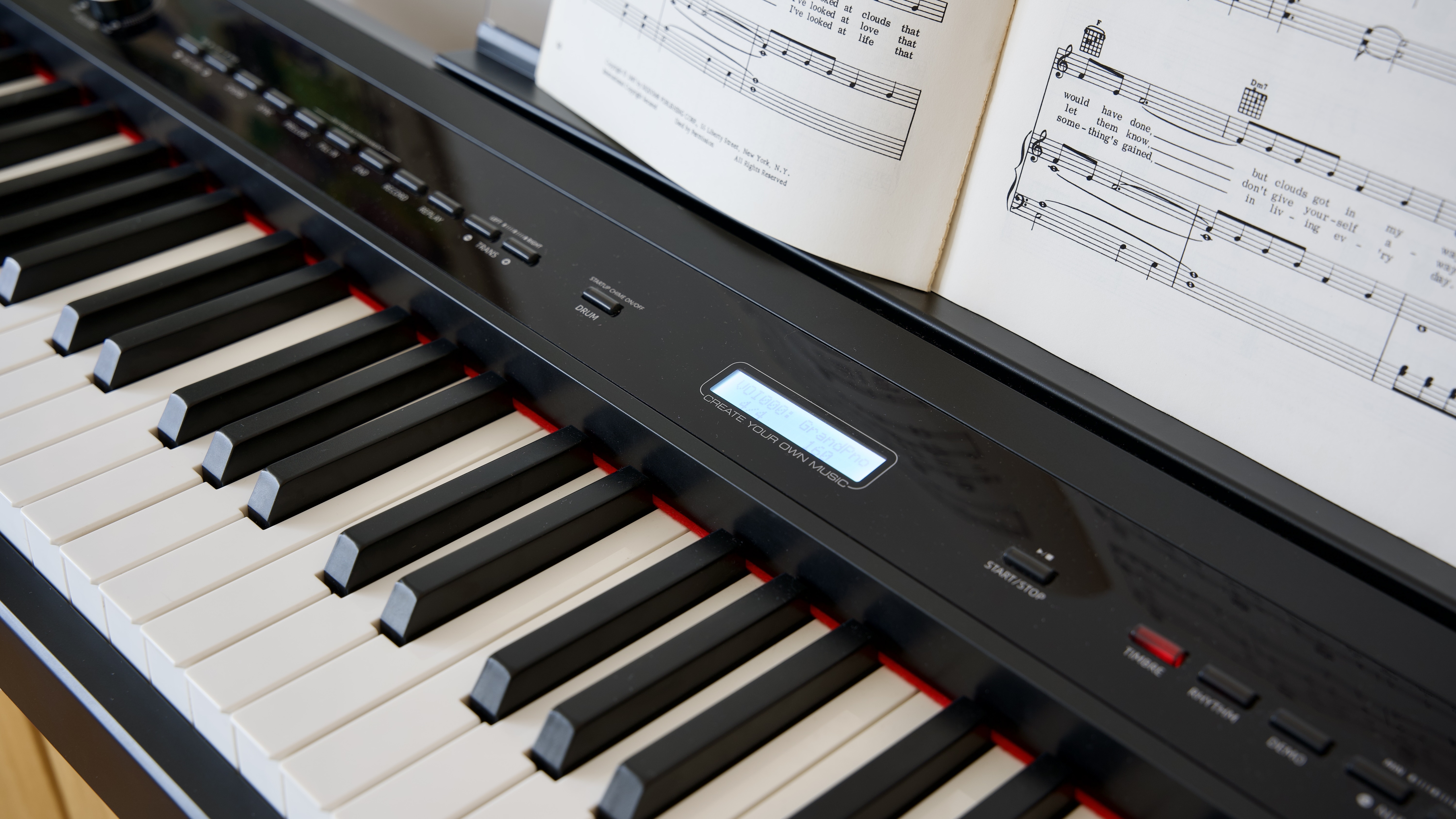
To aid my piano journey, I have a combination of two different learning styles. On one hand, I will be using the Pianote app, which offers on-demand video lessons, a wide variety of styles and techniques to master, and the flexibility to practice when it suits me. As well as a full Pianote subscription, I was also given the Pianote Prima digital piano to practice on. Now, it's worth noting that typically, a year's sub to the platform would cost $240, or $40 if you chose to pay monthly. There are 10 skills levels caterter for and you gain access to over 1,000 songs. MusicRadar readers can also enjoy an exclusive 30-day free trial.
As a busy working mum with a hectic life, I don’t always have the luxury of setting aside an hour every day for practice, so this on-the-go approach appeals to me.
In addition to that, Chris arranged for me to take lessons with a local professional tutor. Emily has been teaching my son for a while, so I am already familiar with her calm and structured teaching style. As a visual learner who prefers doing things “properly,” I appreciate the personal touch she brings to the instrument. On average, you can expect to pay around £18/$25 for a half-hour piano lesson, but this cost will vary depending on the local rates where you are located in the world.
This combination of one-on-one learning, along with a comprehensive online resource for additional skills development, seemed like the perfect mix. Let’s take a look at how I got on.
My playing diary
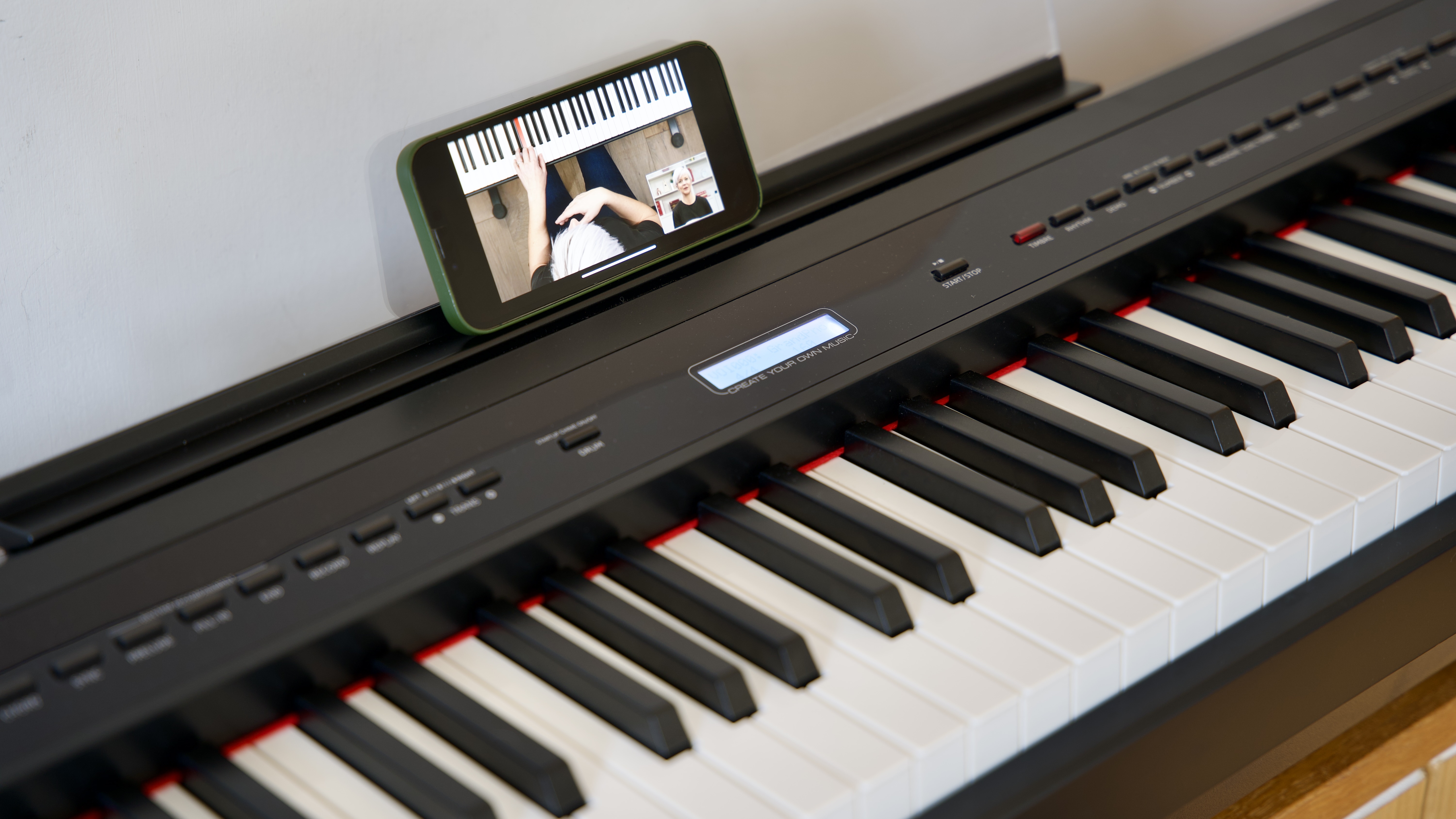
Week 1 - Hello, old friend
The first week was an exercise in reacquainting myself with the piano. I took delivery of the Pianote Prima, an 88-key beginner digital piano, so getting that set up and learning how to change sounds, connect headphones and adjust settings was the order of the week. While I have an upright acoustic piano in the house that my son practices on, the ability to practice silently opened up a world of opportunity and meant that sleeping kids didn’t hamper me. I could feasibly play whenever inspiration struck.
I settled on a few pieces of music I wanted to learn, namely Running Up That Hill by Kate Bush, Slow Show by The National and Nuvole Bianche by the Italian composer Ludovico Einaudi
Setting up the Pianote app itself was simple. I registered for my account, answered some basic questions about my current ability levels and the styles of music and techniques I wanted to learn, and it created a learning pathway for me. Very neat and intuitive. After a little play around, I resisted the urge to dive in, preferring to wait instead for my first in-person lesson with Emily.
My first ‘real’ lesson followed a similar structure; we discussed what I wanted to learn and assessed my current ability level. I settled on a few pieces of music I wanted to learn, namely Running Up That Hill by Kate Bush, Slow Show by The National and Nuvole Bianche by the Italian composer Ludovico Einaudi.
My tutor immediately picked up on something that would shape the entire way I learned. Previously, every passage of music I’d learned, and every finger and hand position, had been committed to memory, which goes some way to explaining why, after all these years, I’d forgotten them. Instead, Emily outlined how we’d be doing things the hard way, i.e. learning to actually read music. This entailed some real back-to-basics learning, but would benefit me much more acutely in the future. It all sounded daunting, but I was up for the challenge.
I was assigned some homework, namely learning basic scales using both left and right hand playing, and given a basic piece of music to learn - "My Immortal" by Evanescence.
Week 2 - Silent practice is a game changer
The second week saw me trying to cement the basics I’d learned in week one. Namely, repetition and practice of sight reading. It can be difficult to read two different hands’ worth of music at the same time, but starting slowly is the key to success here. As the sheet music is broken down into bars, there are natural start, stop and rest points so you can break things down into manageable chunks - more on this later. I’m learning quickly that there are no shortcuts though.
What has really helped has been the ability to conduct silent practice in the evening, when I (finally) get some peace and quiet. Connecting headphones to the digital piano has meant I can find a quiet time in the evening, or during the daytime on my lunch hour, and fully focus on the day’s learning. I can see how this ‘little and often’ approach will bring my ability on much more quickly than if I were to only play during my in-person lessons, so the benefits of using an app are already becoming apparent.
Week 3 - Bad habits, die hard
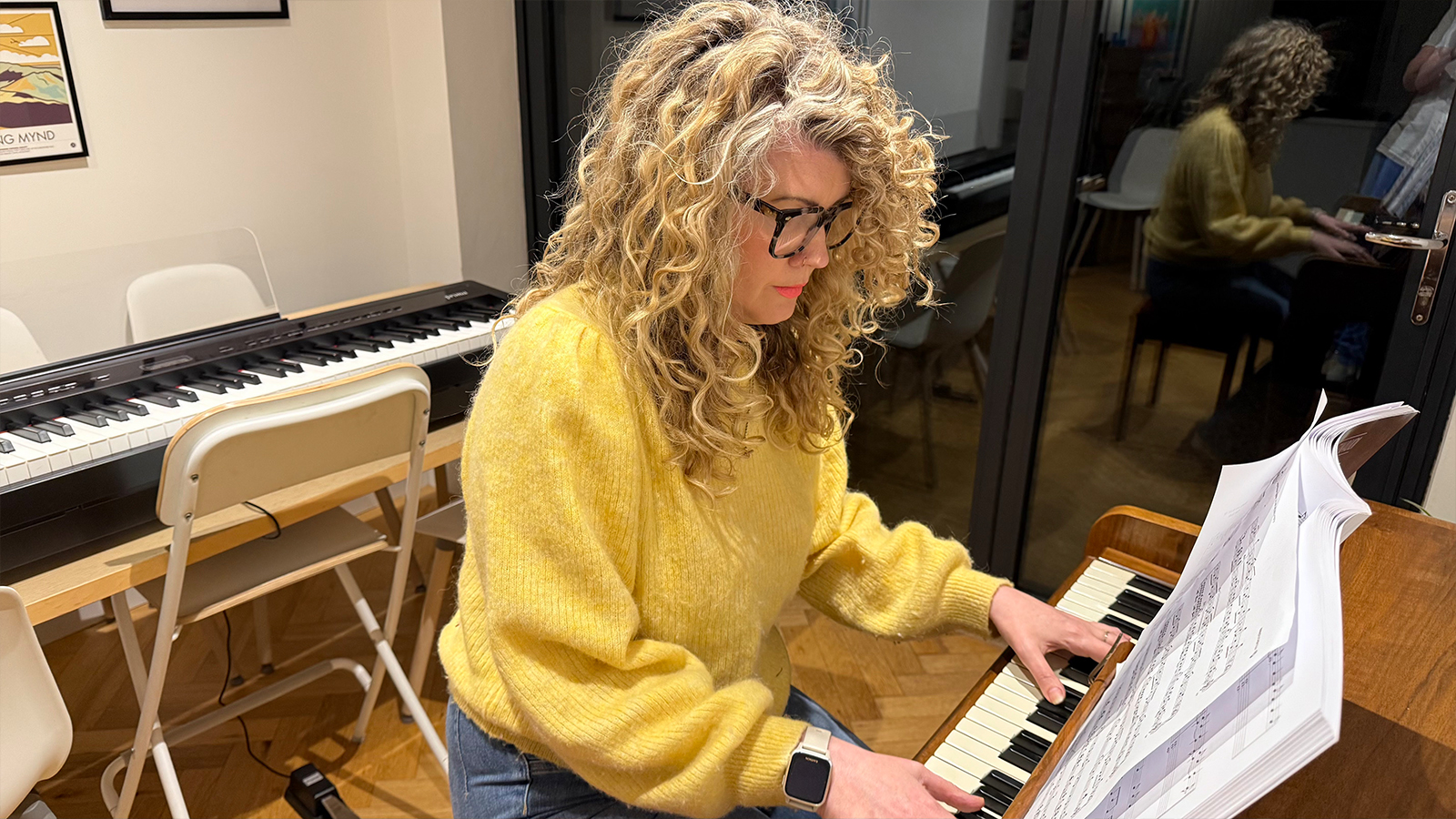
Week three demonstrated one of the main benefits of in-person tuition, and one of the potential downsides of using exclusively online resources; bad habits. After being told I’d find it useful to video myself playing, I recorded a couple of videos and showed them to my teacher. Almost immediately, Emily noticed I had stumbled on an unusual left-hand position which was hampering my ability to reach certain notes or structure some chords.
The combination of these two techniques demonstrated the importance of being relaxed, and with the course duly corrected, I immediately felt more fluid in my playing and better able to traverse the keys
After evaluating what was causing this strange hand position, I was advised to try playing with a small ball in the palm of my hand, causing me to relax slightly. I even tried playing with my right hand holding my left to create a floppy wrist. The combination of these two techniques demonstrated the importance of being relaxed, and with the course duly corrected, I immediately felt more fluid in my playing and better able to traverse the keys.
The main takeaway of this little exercise was that, with the best will in the world, there’s no online video course that can offer this level of detail and analysis of your own personal playstyle or technical ability. That said, it is worth noting that Pianote does offer personalised 1-to-1 support. There’s also a community of Pianote users who support each other, so it's possible to receive this feedback from an online platform, although it may not be as immediate as a face-to-face lesson.
Chris has spoken to me before about the problems associated with bad habits in your playing. As a self-taught guitarist, he’s never had the benefit of someone pointing out basic things like hand/finger position, or relaxing, and, as a result, has found his technique has a ceiling he can’t break through. By identifying, and then correcting, these seemingly small issues before they manifest into bad habits, I stand a greater chance of playing to a higher level in years to come. A victory for ‘proper’ lessons, for sure, but the journey continues.
Week 4 - My confidence is building
With a potentially problematic bad habit ironed out, I entered the fourth week with a new rush of confidence. After playing a duet with my teacher at our session, I wanted to continue fine-tuning my hand placements and ability to play and read simultaneously.
I found a course on Pianote with a fantastically bearded man promising to improve my technique in 30 days. The video series broke down the different elements into tiny detail, with the presenter, clearly a hugely talented player, discussing finger independence and how this translates into greater playing speeds if you get the basics right from the start.
This followed on nicely from what I’d learned in the previous week, so demonstrated a great example of what we’d hoped this process would deliver; a real teacher, offering completely bespoke guidance, running in conjunction with a bank of high quality on-demand online tuition that expanded on what I’d learned and gave me new things to explore when I found time during the week.
It’s still, in relative terms, early in my learning journey, but I can now clearly see how quickly things can come together when you have the right tools at your disposal. Then it becomes a question of your own motivation, which can be a chicken and egg situation - you need motivation to progress, but if you don’t feel that progress, then your motivation suffers. By coming at it from both sides, there’s every chance this can work. Or, to look at it another way, there’s no excuse for it not to!
Week 5 - Running up that hill

Continuing the theme from week four, I wanted to do something that reminded me why I’m learning in the first place. You see, as beneficial as it is to focus on technique, and finger position, and learning scales, bars and staffs, if that’s all you did you’d quickly get bored. There’s no substitute for learning a song you know and love. The song I’d chosen was however, in the words of my teacher, ‘ambitious’ for a learner...
I’d never seen so many notes on the sheet music, placed so closely together, and I began to wonder if I’d bitten off more than I could chew
If you think of Running Up That Hill, by Kate Bush, you’re probably imagining that famous, simple-sounding, recurring three-note synth motif. That would be simple enough to learn, but instead Emily arrived for our lesson with a fully notated arrangement of the track that would make Beethoven cower behind the couch. I’d never seen so many notes on the sheet music, placed so closely together, and I began to wonder if I’d bitten off more than I could chew. I asked Emily to play it through and, sure enough, this was going to be a challenge.
As I’ve done throughout this whole process though, I broke things down and took it slowly. By now, thanks to the practice I’ve done and the work on Pianote, my sight-reading has come on leaps and bounds so while it was slow, the notes I was hitting were the right ones. The left-hand chord changes in particular brought about some encouraging whooping noises from Chris in the other room.
Outside of learning the song, I’ve focused on super-basic things like sharp and flat key signatures, and on improving the speed of my sight reading and general fluidity. Little wins like the progress I’ve made on the Kate Bush track help in reminding me how great it will be when I’ve advanced further, but I’m learning there’s no substitute for the grunt work of practice, practice, practice.
Week 6 - It's all about rhythm
Week six highlighted another of those novice errors that need to be ironed out. It’s only a small thing, but I’ve been subconsciously treating bars as an opportunity to rest or pause, whereas in the real-world music doesn’t stop every four beats. Emily prescribed some clapping exercises, which felt a little silly so I practiced this when I was alone, but it brought some clarity over basic musical elements like counts and rhythm.
This was a slightly truncated week due to various non-musical reasons, so opportunities to practice were limited to some short evening sessions on Pianote. It’s frustrating when you feel like you’re building a head of steam to find you’ve ran out of time to practice, but life comes at you fast sometimes. It’s there the benefit of on-demand learning comes into its own though, so on the rare occasions I found I had 30 minutes, there was always something on Pianote for me to do, or learn.
Week 7 - Scales don't need to be boring

If there’s one thing that will put off any learner, of any instrument, I’m inclined to think it’s learning scales. Sure, they’re the building blocks of everything, and as fundamental as rhythm and technique, but I’m finding it hard to get excited about them. Thankfully, Pianote has some great courses and videos which helped point me in the right direction.
I’d always thought of scales as being something used by people who composed their own music, to help them ensure things sounded right, or had the right emotion or expression. The Pianote courses helped me understand scales on a deeper level, namely the patterns they present and the benefits of at least understanding which notes belong together. I can’t say I’ll ever get excited by scales, but I can at least respect the purpose they play now in a way I couldn’t, or didn’t want to, before.
Week 8 - Looking to the future
As I reached week eight of the process, I tried to reflect on everything I’ve learned along the way. In reality, nobody is going to become completely musically fluent in such a short space of time. What it has done, however, is show the benefits of employing different learning styles into the mix.
I really enjoyed, and feel I benefited mostly from, the in-person learning. There’s no substitute for a friendly face pointing out where you can improve, and celebrating with you when you get things right. As good as online learning resources are, I don’t think the piano teachers of the world need be overly worried just yet.
That being said, combining the in-person tuition with a curated bank of helpful, on-demand resources was definitely important for my progress. My experience was that the app supported the ongoing, necessary but often frustrating facets of learning an instrument, and did it in as helpful a way as possible, while the in-person tuition kept me accountable and honest.
My general conclusion is that neither way is the best way, and both ways have their benefits. What it really comes down to is your ambition and determination. Are you willing to learn the scales, and make the mistakes, and feel the frustration, in order to reach that magical point where you can sit at a piano and play something flawlessly?
What this process has done is shown me an accelerated road towards the light at the end of the tunnel. I’ll keep learning, both with Emily and Pianote, and I’ll keep having good days and bad days. But when you play that first tricky piece, without any mistakes, the feeling you get makes it all worthwhile. It ain’t easy, but nothing worth having ever is.
Hear my progress for yourself
Below is a short video of me tackling the Lewis Capaldi mega-hit, Someone You Loved, to give you an idea of where I am with my playing after only eight weeks of lessons.
More piano-related features
- Online vs face to face piano lessons: Which is right for you?
- 8 great beginner piano songs to learn
- How to clean you piano keys, step-by-step
- Digital piano FAQ: we answer common digital piano queries

I’m a lover of all kinds of music, slowly making my way on the piano. I listen to a variety of styles, including folk and indie, and have been trying to translate that passion into learning an instrument. After spending years watching my partner testing gear for MusicRadar, I was happy to get my turn to play. When I’m not immersing myself in scales, musical notation and practice regimes, I love walking our dogs Jasper and Magic in the hills of rural Shropshire.
You must confirm your public display name before commenting
Please logout and then login again, you will then be prompted to enter your display name.
“If this was real, it would be really impressive. But since it’s not real, it’s really impressive": Watch the bonkers four-note piano
MusicRadar deals of the week: Score £900 off a Gibson Les Paul Standard, £350 off the Adam Jones Epiphone Les Paul Custom and hundreds off Fender, Squier and EVH


